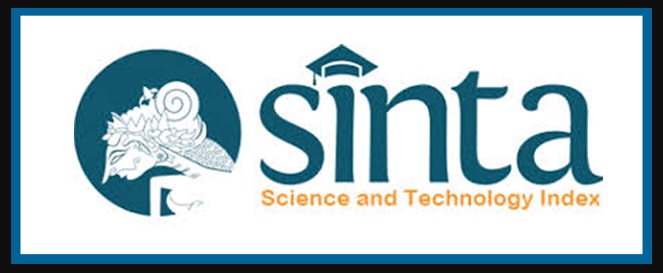Implementasi Jaringan Syaraf Tiruan Pada Kendali Lampu Sorot Mobil Adaptif Berbasis Python
Abstract
Fungsi utama dari lampu jalan untuk memastikan keamaan manusia. Penerangan lalu lintas diharuskan memberikan kondisi visibilitas yang baik dan mengurangin potensi bahaya dengan menerangi objek di sepanjang jalan. Jaringan Syaraf Tiruan diharapkan menghasilkan model terbaik untuk mengendalikan intensitas lampu sorot mobil adaptif pada kondisi yang sesuai dengan lapangan yaitu kondisi terang, mendung dan malam hari. Data diperoleh dari alat bantu yang terdiri dari 5 buah sensor cahaya dan 2 buah LED. Model terbaik didapat melalui training beberapa bentuk model Jaringan Syaraf Tiruan dan prediksi intensitas cahaya lampu sorot mobil berdasarkan dataset training dan testing. Training dilakukan pada 12 model berbeda dengan merubah banyak neuron hidden layer dan fungsi aktivasi pada program Jaringan Syaraf Tiruan. Model Jaringan Syaraf Tiruan terbaik memiliki parameter 20 node hidden layer, fungsi aktivasi Relu dan epoch 200 dengan error training sebesar 0,0038 dan hasil error prediksi sebesar 147,12.
Keywords
Full Text:
PDFReferences
H. Alyuruk, “Introduction to R and Python. R and Python for Oceanographers”, 1–21. 2019. https://doi.org/10.1016/b978-0-12-813491-7.00001-4
H. Bao, J. Wang, J. Li, H. Zhang, and F. Wu, “Effects of corn straw on dissipation of polycyclic aromatic hydrocarbons and potential application of backpropagation artificial neural network prediction model for PAHs bioremediation. Ecotoxicology and Environmental Safety”, 186(September), 109745. 2019. https://doi.org/10.1016/j.ecoenv.2019.109745
A. Castañeda-Miranda and V. M. Castaño, “Smart frost control in greenhouses by neural networks models”. Computers and Electronics in Agriculture, 137, 102–114. 2017 https://doi.org/10.1016/j.compag.2017.03.024
Y. S. Chen and S. C. Chiu, S. C, “New method of automatic control for vehicle headlights”. Optik, 157, 718–723. 2018. https://doi.org/10.1016/j.ijleo.2017.11.137
A. Ekrias, M. Eloholma, L. Halonen, X. J. Song, X. Zhang, and Y. Wen, Road lighting and headlights: Luminance measurements and automobile lighting simulations. Building and Environment, 43(4), 530–536. 2008. https://doi.org/10.1016/j.buildenv.2007.01.017
T. Emoto, U. R. Abeyratne, K. Kawano, T. Okada, O. Jinnouchi, and I. Kawata, “Detection of sleep breathing sound based on artificial neural network analysis”. Biomedical Signal Processing and Control, 41, 81–89. 2018. https://doi.org/10.1016/j.bspc.2017.11.005
F. Farhadi, and A. N. Lodi Vahid, “Learning activation functions in deep neural networks”. Département de Mathématiques et de Génie Industriel, 151. 2017. https://publications.polymtl.ca/2945/
S. R. O. Y. Imantaka, “Universitas Indonesia Sistem Pengenal Wajah Berbasis Ensemble”. 2010
E. Iyasele, “TO PROGRAMMING USING”. February. 2020
R. E. Johnson, and J. W. Sensinger, “Actuator Technologies. In Handbook of Biomechatronics”. Elsevier Inc. 2019.
https://doi.org/10.1016/b978-0-12-812539-7.00002-7
B. Karanayil, and M. F. Rahman, “Artificial Neural Network Applications in Power Electronics and Electric Drives. In Power Electronics Handbook (4th ed.). Elsevier Inc. 2018. https://doi.org/10.1016/b978-0-12-811407-0.00041-6
Q. Khan, and Q. Bao, “Light-emitting devices. In 2D Materials for Photonic and Optoelectronic Applications”. Elsevier Ltd. 2019. https://doi.org/10.1016/B978-0-08-102637-3.00007-3
R. Kotschenreuther, R. “White LEDs for lighting applications. In Nitride Semiconductor Light-Emitting Diodes (LEDs): Materials, Technologies, and Applications: Second Edition. Elsevier Ltd. 2018. https://doi.org/10.1016/B978-0-08-101942-9.00016-2
T. P. Lillicrap and A. Santoro, “Backpropagation through time and the brain”. Current Opinion in Neurobiology, 55, 82–89. 2019. https://doi.org/10.1016/j.conb.2019.01.011
C. Nwankpa, W. Ijomah, A. Gachagan, and S. Marshall, S. “Activation Functions: Comparison of trends in Practice and Research for Deep Learning”. 1–20. 2018. http://arxiv.org/abs/1811.03378
R. Prasetya, “Implementasi Jaringan Syaraf Tiruan Backpropagation untuk Memprediksi Ketinggian Air (Studi Kasus: Sungai Ciliwung)”. STRING (Satuan Tulisan Riset Dan Inovasi Teknologi), 1(3), 297. 2018. https://doi.org/10.30998/string.v1i3.1558
B. A. Rizkin, K. Popovich, K and R. L. Hartman, “Artificial Neural Network control of thermoelectrically-cooled microfluidics using computer vision based on IR thermography”. Computers and Chemical Engineering, 121, 584–593. 2019. https://doi.org/10.1016/j.compchemeng.2018.11.016
R. Sathya, and A. Abraham, “Comparison of Supervised and Unsupervised Learning Algorithms for Pattern Classification”. International Journal of Advanced Research in Artificial Intelligence, 2(2). 2013. https://doi.org/10.14569/ijarai.2013.020206
M. H. SAZLI, “A brief review of feed-forward neural networks”. Communications, Faculty Of Science, University of Ankara, May, 11–17. 2006. https://doi.org/10.1501/0003168
S. Sieniutycz, and Z. Szwast, “Neural Networks—A Review of Applications”. Optimizing Thermal, Chemical, and Environmental Systems, 109–120. 2018. https://doi.org/10.1016/b978-0-12-813582-2.00004-5
A. K. Sreedhar, and B. L. Sharma, “Light Emitting Diodes”. 1(March 2015), 1–13. 1973. https://doi.org/10.1007/978-1-349-16219-2_2
H. I. Suk, “An Introduction to Neural Networks and Deep Learning”. In Deep Learning for Medical Image Analysis (1st ed.). Elsevier Inc. 2017. https://doi.org/10.1016/B978-0-12-810408-8.00002-X
R. Toulson, and T. Wilmshurst, “Analog Input. Fast and Effective Embedded Systems Design”, 91–109. 2017. https://doi.org/10.1016/b978-0-08-100880-5.00005-0
DOI: http://dx.doi.org/10.22441/jte.2020.v11i3.006
Refbacks
- There are currently no refbacks.
Copyright (c) 2020 Jurnal Teknologi Elektro
Publisher Address:
Teknik Elektro, Fakultas Teknik, Universitas Mercu Buana
Jl. Raya Meruya Selatan, Kembangan, Jakarta 11650
Tlp./Fax: +62215871335
Email: [email protected]
Website of Electrical Engineering
http://teknikelektro.ft.mercubuana.ac.id
p-ISSN : 2086-9479
e-ISSN : 2621-8534
Jurnal URL : http://publikasi.mercubuana.ac.id/index.php/jte
Jurnal DOI: 10.22441/jte

Ciptaan disebarluaskan di bawah Lisensi Creative Commons Atribusi-NonKomersial 4.0 Internasional.






